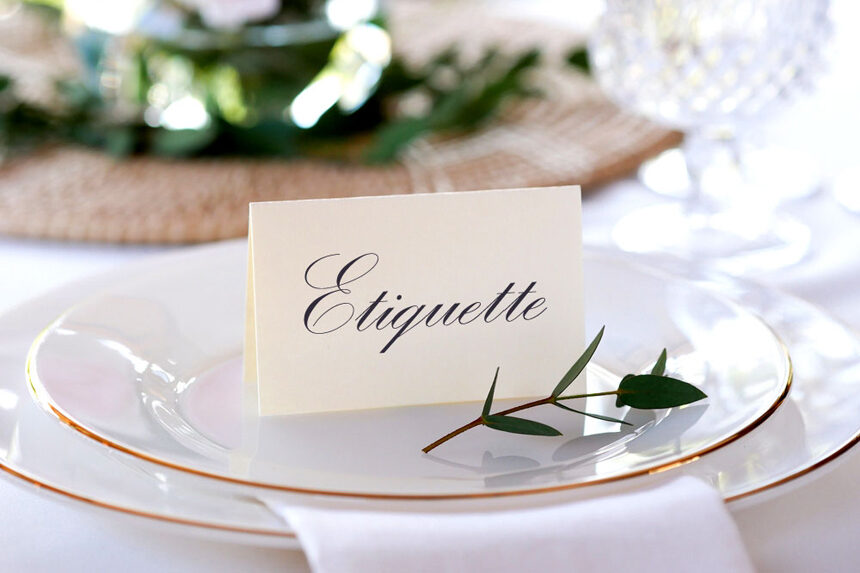Senior managing editor and logophile Andy Hollandbeck reveals the sometimes surprising roots of common English words and phrases. Remember: Etymology tells us where a word comes from, but not what it means today.
So many of the words whose histories I explore in this column were borrowed into English from French and ultimately stemmed from Latin. French is, after all, a Romance language. But just because it’s a Romance language doesn’t mean that all of its words are derived from the language of the Romans.
Back in the 14th century, the French verb estiquer meant “to affix or stick on,” a word borrowed from the Middle Dutch steken and that is probably related to the Modern English stick. From estiquer came the noun estiquette (sometimes estiquet), which was a short note that was stuck on something: a permit or license, a scrap stuck to a post to serve as a target for a game, a document containing military orders, or a label attached to something to identify its contents.
The word found its way into the written English record in the 1520s, but it looked a little different. The first syllable had gotten lopped off — after all, it sounded like it was just the indefinite article a — and so estiquet became, ultimately, ticket.
Meanwhile, back on the continent, estiquette was later subject to spelling reform and became étiquette. The Spanish then borrowed the word, changing it to etiqueta. In the 16th century, etiqueta described notes and orders about how to behave when someone appeared in court — that is, among royals and nobles, not judges and attorneys. These etiquetas might tell you, for example, how to address the queen, whom to greet first among foreign dignitaries, or how to respond when the king sneezes. Over time, etiqueta came to refer not to the notes themselves but to the ceremonies and proprieties that were written on them.
French speakers then adopted this Spanish “rules for proper behavior in court” sense for their own word étiquette, which, in the mid-18th century, English speakers then borrowed again from the French, this time without shortening. And the purview of etiquette expanded beyond the court into a set of rules for proper behavior in all walks of life.
More than a century later, in 1922, Emily Post would publish Etiquette in Society, in Business, in Politics, and at Home, a popular book that began a lifelong career in clarifying and dictating modern etiquette. And it all began with a just a short note stuck on a flat surface.
Become a Saturday Evening Post member and enjoy unlimited access. Subscribe now




Comments
A really interesting word aside from its origins of ‘affix or sticking onto something’ to proper rules of behaving in court, finally to proper behavior more or less across the board. The word actually looks and sounds like that’s what it should/would be for, and is!